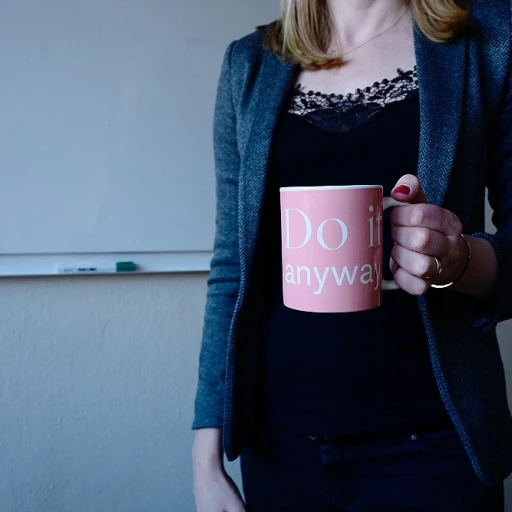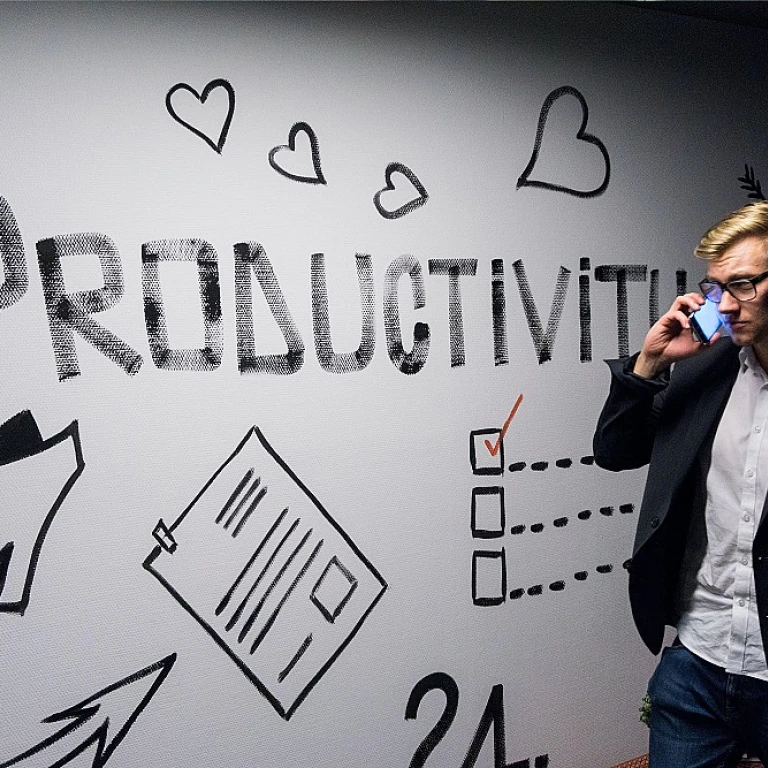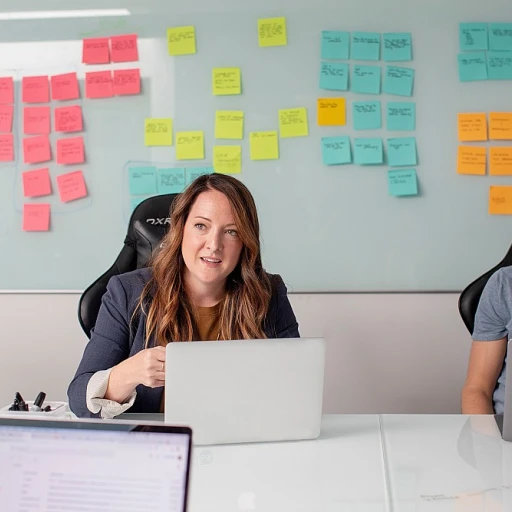
Understanding the Importance of Work-Life Balance
Recognizing Why Work-Life Balance is Critical
In the modern world, achieving a harmonious work-life balance is no longer an option but a necessity for maintaining mental health and overall sanity. Many professionals experience burnout and stress, not from the volume of work alone, but due to a lack of separation between their work and personal lives. This overlap affects their well-being and productivity.
Consider how often stressors from daily life affect your ability to focus. Perhaps you notice bugs in daily tasks or during a software application's development. Understanding and performing sanity tests can provide insights into how you manage these disruptions. A key test of balance is recognizing these stress points and addressing them before they avalanche into larger issues.
Balancing work and personal time involves setting boundaries and focusing on testing strategies that promote productivity and relaxation simultaneously. Just like in a software build, where checks are conducted to ensure functionality and bug fixes, maintaining sanity requires regular sanity checks to spot regression and changes in personal habits that could impact your time and sanity.
Being aware of the importance of work-life balance will empower you to begin forming a testing strategy for your life, ensuring you are not only checking off work tasks but also prioritizing your personal sanity and well-being. When you understand the critical role balance plays, implementing other techniques such as mindfulness and leveraging technology become clear and manageable steps towards a more fulfilled lifestyle.
Identifying Stressors in Your Daily Routine
Spotting Stress Inducers in Your Day-to-Day Life
Striking the perfect work-life balance is not only about managing tasks but also about recognizing stressors that can erode your sanity. When it feels like the scales of work and personal life are tipping, it's paramount to identify what's causing the strain. One method to isolate stressors is by adopting a software testing mindset. Much like how a sanity check aims to quickly verify the functionality of a software application, you can perform a quick sanity test of your daily routine. This involves:- Time Tracking: Monitor how much time you devote to different activities. This will help you identify disproportionate time spent on tasks that don’t contribute meaningfully to your work or personal goals.
- Testing Strategy: Establish a ‘smoke test’ for your day by pinpointing activities that consistently predict a more stressful day. Are there daily changes or tasks that trigger tension? Analyze their necessity and make adjustments as needed.
- Regression Testing: After implementing a change like a new work schedule or personal commitment, assess whether old stressors have resurfaced. If so, re-evaluate and refine your approach.
- User Feedback: Although we are not software, seeking feedback from close ones can unveil unnoticed stress points. Sometimes an external perspective helps in recognizing patterns we might overlook.
Creating Your Personalized Sanity Checklist
Crafting Your Custom Well-being Blueprint
Navigating the maze of professional responsibilities and personal commitments calls for a well-thought-out approach. A personalized sanity checklist serves as a compass, guiding you through everyday turbulence and ensuring you stay on course.- Recognize Priorities: Distinguish between the essential and the non-essential. By focusing on priorities, you minimize stressors while maximizing productivity. Start by asking what truly impacts your work-life balance and streamlining those tasks.
- Implement Periodic Sanity Checks: Borrow a principle from software testing, where sanity checks quickly evaluate if a system operates correctly. A similar approach in your routine involves brief reflections at set intervals to gauge if current habits align with your balance goals.
- Utilize Simple Testing Strategies: Much like smoke testing in a software application verifies basic functionalities, apply basic checks to your routine. Ensure that core elements of your lifestyle, such as health, relationships, and career pursuits, are in harmony.
- Adapt to Changes: Just as software development evolves with version updates and new features, your strategy will require adjustments over time. Regularly test the functionality of your schedule and make necessary bug fixes to accommodate changes in circumstances.
- Employ Regression Testing for Consistency: Implement a method akin to regression testing to confirm that adjustments don't disturb established balance. Reevaluate your checklist periodically to maintain an equilibrium.
Implementing Mindfulness and Relaxation Techniques
Mindfulness Practices for Daily Stability
Finding a balance between work and life often requires a clear, calm mindset. Incorporating mindfulness practices into your daily routine can bring stability and enhance your overall sanity. Regularly engaging in activities that promote relaxation can greatly reduce stress and improve focus, making it easier to tackle the demands of both work and life.- Daily Meditation: Set aside 10-15 minutes each day to sit quietly, focusing on your breath. Meditation can help clear your mind and reduce anxiety, providing more mental clarity for daily tasks.
- Progressive Muscle Relaxation: Gradually tense and then relax each muscle group, starting from your toes up to your head. This technique aids in releasing built-up tension, which can accumulate from work stressors or personal challenges.
- Mindful Lunch Breaks: Step away from your desk during meals. Eating mindfully, by savoring each bite and focusing on the flavors, can serve as a quick sanity check during a busy workday.
Implementing a Mindful Testing Strategy
Incorporating mindfulness into your work processes, like software testing in development, can create a more balanced workflow. Instead of rushing through, adopt a mindful strategy to ensure accuracy and functionality.- Perform Sanity Checks: Before deployment or launching major features, conducting sanity tests can help verify that independent parts of an application work together seamlessly. This testing strategy ensures stability without overstressing the system.
- Smoke Testing: Conducting basic smoke tests on real devices helps identify major issues early, preventing the accumulation of critical bugs that could hamper productivity later.
- Regression Testing: Regular regression checks after changes or bug fixes are crucial in maintaining application performance. This strategy confirms that new developments haven't adversely affected existing features.
Leveraging Technology for Better Balance
Utilizing Technology Wisely
In our fast-paced world, technology can be both a boon and a bane. Understanding how to leverage it for a better work-life balance involves a careful approach.
While technology keeps us connected, it can also tether us to work 24/7, contributing to stress. It's crucial to strike a balance. Here are some practical tips:
- Set Boundaries: Use apps that manage your work time effectively. For instance, you can set reminders to take regular breaks, ensuring you step away from your desk periodically.
- Embrace Automation: Automation in software development or application testing can reduce manual workload. Automate repetitive tasks to free up time for more meaningful work.
- Testing Strategies: When it comes to ensuring the functionality of a software application, implementing sanity checks is vital. They help identify major flaws before they escalate. Conduct regular sanity tests and smoke testing to maintain the quality of the product.
- Use Real Devices: Although simulators are effective for initial software testing, using real-device testing can help uncover issues specific to users’ experiences.
- Leverage Communication Tools: Opt for tools designed to improve collaboration and reduce unnecessary meetings. This ensures your work time is productive, leaving more personal time.
By crafting a personalized sanity checklist that integrates technology, you can ensure you’re making informed choices to better manage your work-life alignment.
Building a Support System for Sustained Balance
Forming a Reliable Network
In your journey towards achieving a harmonious work-life balance, the significance of a supportive network cannot be overstated. A well-built support system can alleviate stressors identified in your daily routine and bring stability to your personal and professional life.
Establishing a robust community involves several steps:
- Connect with Colleagues: Engage with your coworkers to cultivate mutual understanding and support. Sharing insights about sanity testing or new features of a software application can enrich both your and your peers' experiences.
- Seek Mentorship: Finding a mentor in your domain, such as software development, can provide guidance and support. A mentor can assist in navigating challenges like sanity tests and smoke testing within professional growth.
- Friends and Family: Do not underestimate the power of personal relationships. Discussions held with family over basic issues or changes in your work environment can bring invaluable perspectives and support.
- Professional Networks: Join industry groups or forums that are aligned with your line of work, such as software development or testing strategy. This can be a great way to exchange ideas and conduct sanity checks on your methods.
- Self-Check: Regularly perform sanity checks on your own workload and emotional state. It's akin to running a smoke test, ensuring that vital functions of your work-life balance are operational.
Having a reliable support system will ensure the stability necessary to handle both the smoke testing of new software builds and potential regression issues upon changes to existing applications. This network ultimately contributes to maintaining your sanity and fostering a work-life balance that is sustainable in the long run.












